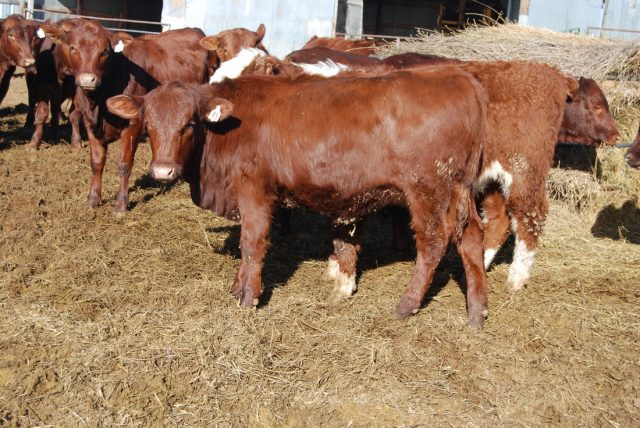Type the name of the breed you're looking for below
[wpdreams_ajaxsearchlite] Don't see the breed your're looking for? Click here and let us know!
Barzona cattle
| Place of Origin | United States of America |
| Origin | The development of the Barzona began in 1942 when F.N. Bard and his wife, at their ranch in the intermountain desert area of Yavapai County, Arizona. They hoped to develop a breed that would be adapted to their area which was rugged and rocky, with extreme temperatures, sparse rainfall, and scattered feed. Said Bard, "I want to find a breed-or make a breed of cattle, that with the same number, on the same range, will produce more pounds of salable beef." In 1946, E.S. "Jack" Humphrey joined with the Bard's and took over the management of the breeding operations. He combined the genetics of the Africander, Hereford, Shorthorn and Angus breeds. Africander bulls were bred to Hereford cows. Walter Kruse in Barzona Cattle estimates that the Barzona carries all four breeds in about equal proportions. Production records were maintained a rigid selection was carried out for fertility, rate of gain and mothering ability. Those animals with the most desirable records were used back in the breeding program. The best cattle in the developing breed were moved to Bard Kirkland Ranch in 1948, and in 1959 the entire operation was moved to that ranch. The ranch was sold and the herd dispersed in 1974. Mrs. F.N. Bard, in correspondence with the author of Modern Breeds of Livestock, indicates that most of the herd was sold to breeders in Arizona, but some animals were also sold to the north and southeast. |
| Purpose | Modern Barzona are a medium size beef animal. |
| Appearance | Actual mature size varies somewhat with the environment. It is distinguishable by its longish head and . Barzona are generally medium red, but color may vary from dark to light red, with occasional white on the underline or switch. |
| Horns | Either horned or polled (hornless) |
| Other Considerations | The infusion of Africander blood into the Barzona gene pool has much to do with the breed's exceptional hardiness. A native African breed, the Africander dates back to the 15th century. It is known for feet and legs built to handle rough country, an ability to utilize a high level of browse, as well as heat tolerance, insect and disease resistance. It is said that Barzona calves are hardy and exhibit outstanding vigor at birth. In addition, information from the registry states that pinkeye and cancer eye are almost nonexistent in the breed due to their dark pigmentation and deeper eye set. Barzona cattle were developed for rigorous range conditions and have performed very well under such environments. The performance in the feedlot and on slaughter tests have also been satisfactory. Barzona cows are considered good mothers and the bulls are regarded as aggressive in their breeding performance. Selection has been made for hardiness traits that include good wearing feet and legs, and the ability to walk with ease, graze sparse ranges and survive under arid conditions. |



